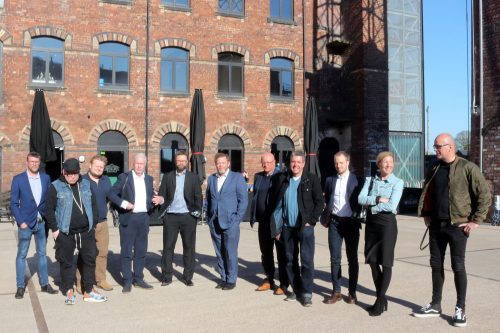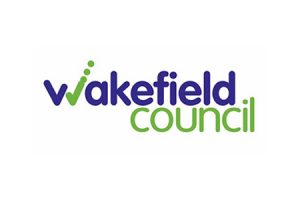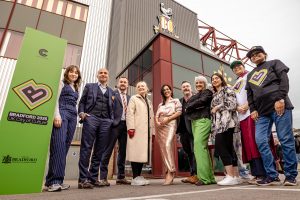Creative Wakefield: growing a culture cluster

As Wakefield seeks to position itself as a regional creative hub, we brought together some of the city’s – and the region’s – leading creative professionals to discuss the advantages the sector can bring, the assets it can use and the challenges it might face.
The Creative Wakefield round table, sponsored by Wakefield Council, met at one of the latest creative assets – Tileyard North, located in a curve of the River Calder next to the Hepworth Gallery.
Ben Cook, Wakefield Council’s service manager for culture and tourism, said the creative sector could help address health inequalities and deprivation.
“The key driver for our city centre master plan is culture and creativity. That isn’t just because someone’s gone, ‘That’s a nice thing, let’s do that.’ It’s because fundamentally, we thought about the challenges that face us, whether it be education, or the need to drive good jobs and bring employment into the city. And we said what are the things that can do that? And creativity is one of the key things that ticks those boxes.”
Connectivity is key to any hub, and in that regard Wakefield is well served – it lies on the London intercity rail route, close to the junction of the M1 and M62.
The opening of Tileyard North, Clare Hunt, enterprise manager at Wakefield Council, said, is “making people aware that Wakefield is not just geographically central, but actually a heart that can only grow bigger the more people jump on board.”
Tileyard North, she said, was the latest in several creative wins for the city. The city also boasts the Production Park, the Art House and the Yorkshire Sculpture Park. And just across the road from Tileyard North and the Hepworth is a hidden gem: the medieval chantry chapel on the old Calder bridge, one of only four surviving medieval bridge chapels in the country.
“You get one really good thing, and then another good thing,” she added. “It’s absolutely wonderful. I’m really excited for Wakefield.”
Nick Keynes, co-founder of Tileyard, confirmed the decision to open Tileyard North in Wakefield was heavily influenced by existing creative facilities as well as the city’s regional connectivity.
“Location is a big reason why we’re here,” he said. “The Hepworth was a big reason, and the council very much encouraged us and supported us. But you know, I’m using the ‘centre of the universe’ line with everyone I talk to. It’s fantastic. It’s so easy to get to.”
Dr Stephen Michael, chairman of Wakefield Creative, said the new clustering of creative sites was important as Wakefield’s creative growth moved from planning to reality. “The conversations that are stimulated in places like this become more important. To do something in a space like this is magical, and I think that’s what people are beginning to recognise.”
With such good connections, the participants discussed whether Wakefield has sufficient identity to make itself distinct from surrounding cities.
Mark Finch, director of Place Strategy and a Wakefield Creative board member, said Wakefield now has sufficient creative assets to grow the sector sustainably and organically, but added, “I wonder whether as a city, as a place, we’re confident enough that it’s not just a town, or a city in West Yorkshire, or a neighbour of Leeds, but a creative destination in itself.”
Sarah Fatchett, founder of 364 Response, said she had difficulty persuading younger people to move to Wakefield. “It’s great to see it starting, but I think we need to do more to get those smaller companies in Leeds to walk it through.”
Adam Lingard, associate at architects Vector DC, said getting on the map for creativity would benefit other Wakefield firms as well. “The more places like [Tileyard North], the more places can be associated with Wakefield, the less you have to say, ‘Wakefield near Leeds’ because people will know where Wakefield is itself.”
Lee Hicken, founder of City Talking Productions, warned against town-based tribalism. “We shouldn’t worry too much about that side of things. I think that the package – probably Leeds City Region is the way politicians might describe it – is similar. This is a similar area, but we have different things here. There’s not much distinction between Leeds and Wakefield when you’re talking to someone from London or the States.”
James Pierechod, head of creative at content studio Powerhouse, said he had spent 20 years trying to convince brands to come to Yorkshire for creative content.
“That conversation is genuinely easier now. They will bring production, they will bring creative, they will bring strategy up to the north because of the facilities and capabilities of the region.”
Robin Cramp, business development and sales manager at Production Park, which began as music studios and has moved into film and virtual sets, agreed. “The discussion changes, and you see a lot of external companies that have come to the region. The fact that you don’t have to drive the M62. The fact that there’s stuff on your doorstep, is quite powerful.”
That Wakefield’s creative sector growth was organic, rather than the result of external programmes, important for inspiring young people to enter the sector, said Dr Stephen Dobson, associate professor in Creativity and Enterprise at the University of Leeds.
“You can argue that aspiration is hard to maintain when it’s parachuted in and then disappears. When it’s organically grown it’s a lot more sustainable. And you can have your city of culture on top of that to catalyse what’s already there.”
Jamie Sefton, managing director of video game industry networking association Game Republic, pointed out that with Rebellion North and Team17, two important UK gaming studios were present in Wakefield. “You just need to convince people who live here what’s around them sometimes. If they don’t realise what’s going on, that aspiration just goes by the wayside.”
Sophie Mei Lan, chief storytelling officer at Sparkle Communications, said it was important to establish grassroots communities and skills to provide opportunities to people who might otherwise think they don’t belong in the creative sector.
“It’s looking at alternative ways to make it fun,” she said. “Even the words ‘creative’ and ‘cultural’ put a lot of people off.”
Mei Lan works to empower people through YouTube, and said invitations to the provider’s London studios before the pandemic was invaluable for giving content creators a sense of belonging. “It’s those little bridges of getting to know people face to face, and being like them. But it was down south and closed during the pandemic. If we had an opportunity to do that, but make it even more accessible, all sorts of stuff could happen.”
Paul Brown, chief executive of 6B Digital, said, “Anything to attract creatives to Wakefield is going to have a positive effect on business. We’ve got a good creative team, all based in and around Wakefield, and any events happening, any collaboration opportunities, we really get into that. Creatives like getting out and meeting people. The more spaces and opportunities we have to do that is only going to be a good thing.”
Keith Evans, the council’s creative and digital sector development manager, said his team was helping young people develop hobbies and passions into businesses. “That adds value to the network. It becomes a whole package.”









